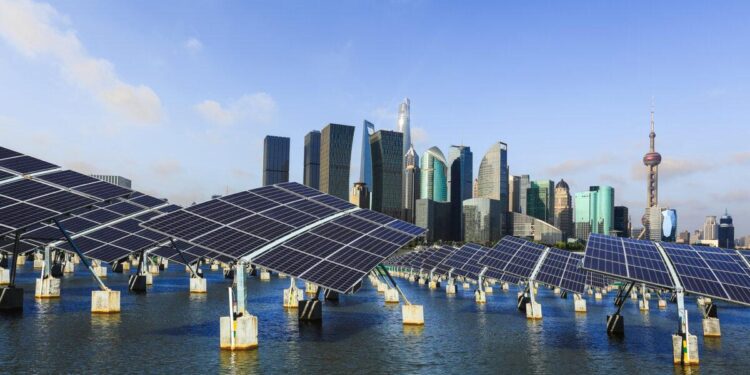In the shifting landscape of global energy, China’s rise as a dominant force is both undeniable and complex. As the world grapples with the twin challenges of economic growth and climate change, understanding China’s energy trajectory becomes crucial. Through three compelling charts, this article from MIT Technology Review unpacks the intricate story behind China’s energy consumption, production, and future ambitions-offering a clear window into how one nation is reshaping the global energy map.
China’s Strategic Energy Expansion Shaping Global Markets
China’s energy strategy is not just about securing supply; it’s a carefully orchestrated plan to rewrite the rules of global energy markets. By aggressively investing in renewable technologies, expanding its solar and wind capacity, and maintaining a robust foothold in coal and natural gas, the nation is positioning itself at the forefront of the energy transition. This multi-pronged approach allows China to diversify risk while leveraging its technological advancements and scale, effectively steering global demand patterns and influencing pricing trends across continents.
The ripple effects of this expansion are clear when examining the key sectors driving growth:
- Renewables: Leading global installation of solar panels and offshore wind farms.
- Energy Storage: Pioneering battery manufacturing capacity with cutting-edge technology integration.
- Fossil Fuels: Balancing continued coal use with emerging natural gas imports to maintain supply stability.
| Sector | 2023 Capacity (GW) | Growth Rate (YoY) |
|---|---|---|
| Solar Energy | 320 | 18% |
| Wind Power | 280 | 15% |
| Coal Consumption | 1,200 | -2% |
| Natural Gas Imports | 400 | 10% |
Decoding the Data Behind China’s Resource Control and Consumption
China’s control over key natural resources reflects a strategic approach woven tightly into its broader economic ambitions. By securing vast reserves of critical minerals such as rare earth elements, lithium, and cobalt, the country has positioned itself not just as a manufacturing powerhouse but as an indispensable player in the global energy and technology supply chains. This orchestration goes beyond mere possession; it’s a calculated dominance that influences global markets, pricing, and the trajectory of emerging green technologies.
Examining the data reveals clear patterns:
- Resource Import Dependency: Despite vast domestic deposits, China imports over 80% of rare earth inputs, leveraging international sources to meet soaring demand.
- Energy Consumption Composition: Coal remains dominant, yet renewable consumption grows at a staggering 15% annual rate, reshaping the long-term energy landscape.
- Global Supply Chain Influence: Control over processing facilities grants China an outsized role in refining critical minerals, often bottlenecking other nations’ access.
| Resource | China’s Share of Global Production | Annual Consumption Growth |
|---|---|---|
| Rare Earth Elements | 60% | 12% |
| Lithium | 15% | 25% |
| Cobalt | 45% | 18% |
China’s strategic grip on these resources underpins its ambition to lead the next industrial revolution, particularly in electric vehicles and renewable energy infrastructure. By dictating supply, processing, and technological standards, China wields significant influence over global markets and innovation pathways. For other nations, this dynamic presents both challenges in supply security and opportunities for cooperation and diversification.
If you need help with further elaboration, generating analysis, or adjusting styles, feel free to ask!
Navigating Future Energy Landscapes with Informed Policy and Innovation
As global energy demands escalate, the path forward hinges on a delicate interplay between visionary policy frameworks and breakthrough innovations. Countries like China exemplify how strategic planning combined with technological advancement propels energy sectors toward sustainability and resilience. Embracing renewables, smart grids, and energy storage technologies is not just a trend but an imperative to decarbonize economies while balancing economic growth. Policymakers worldwide must foster environments that encourage experimentation and agility, enabling rapid adaptation to shifting supply and demand dynamics without compromising environmental goals.
Key areas where targeted action can redefine energy landscapes include:
- Incentivizing clean tech development through subsidies and streamlined regulations.
- Integrating digital monitoring systems for efficiency and transparency.
- Enhancing cross-border energy collaboration to diversify resources and minimize risks.
| Innovation Focus | Potential Impact | Policy Action |
|---|---|---|
| Advanced Battery Storage | Grid stability & off-peak utilization | Research grants & tax credits |
| Hydrogen Economy | Decarbonizing heavy industries | Infrastructure investment |
| AI-Driven Grid Management | Optimized energy flow & demand forecasting | Data-sharing mandates |
Insights and Conclusions
As the world’s energy landscape undergoes rapid transformation, China’s ascent to dominance is vividly illustrated through these three compelling charts. They not only map the scale and speed of China’s energy development but also signal broader shifts in global power and sustainability efforts. Understanding these trends is crucial-not just for policymakers and industry leaders, but for anyone invested in the future of energy. In the end, China’s story is not just about numbers or charts-it is about how the global energy narrative is being rewritten in real time.































